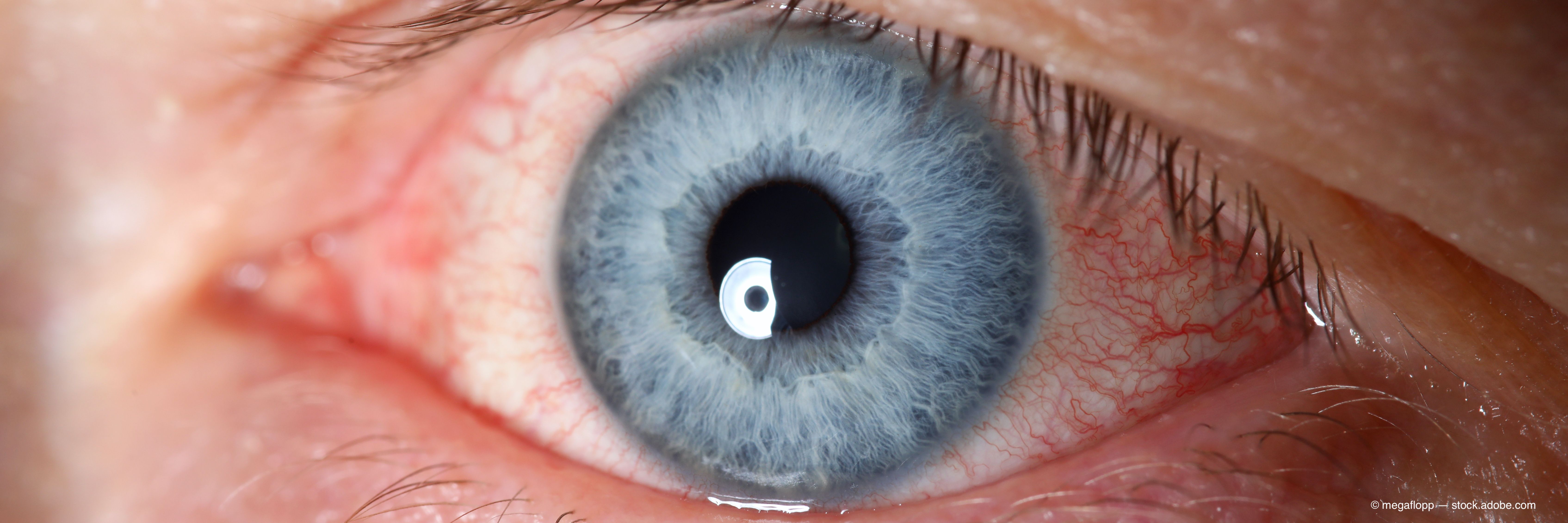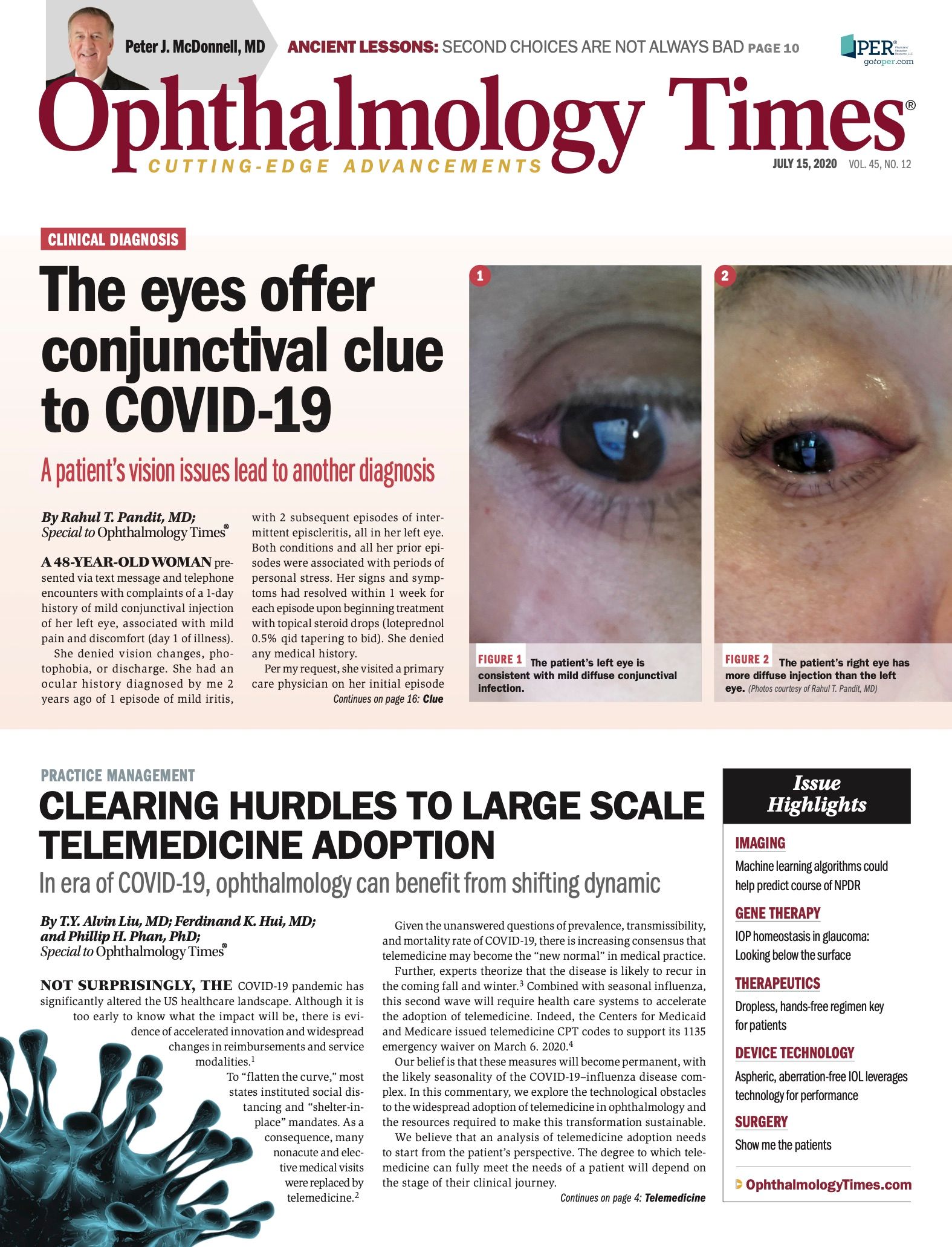Publication
Article
Digital Edition
Amid pandemic, friendly bugs can help protect the eye from infection
Author(s):
Researchers note that more study of conjunctivitis is needed in patients with COVID-19


This article was reviewed by Anthony J. St. Leger, PhD
The eye is blessed with a friendly environment that has a protective effect against infection.
Investigators have reported that tears from colonized mice provide the ocular surface with improved protection from pathogens such as Candida albicans and Pseudomonas aeruginosa, both of which can cause ocular infection.
This is good news because, according to Anthony J. St. Leger, PhD, an assistant professor in the departments of ophthalmology and immunology at the University of Pittsburgh School of Medicine in Pennsylvania, the eye was thought to be an “immune privileged” site, which implied that the organ was largely ignored by the immune system.
Related: Ocular surface inflammation: Vicious cycle of ocular surface disruption
Indeed, the eye is armed with various mechanisms that dampenexcessive inflammatory responses.
However, we do know that active immune responses occur routinely in and around the eye.
A great balancing act of inflammation must be struck to preserve visual acuity, as a nonexistent immune response would leave the eye susceptible to infectious insults and an overactive inflammatory response would result in irreversible damage.
In the case of the cornea, excessive inflammation can lead to corneal scarring and the need for a corneal transplant.
Investigators like St. Leger and others are trying to understand the mechanisms governing the line between infection and inflammatory disease. St. Leger has focused the attention of his lab on the conjunctiva.
In a murine study of ocular surface disease,1 St. Leger and colleagues demonstrated the power of immune responses against commensal bacteria at the ocular surface.
Related: ASCRS 2020: OSD improvement in eyes implanted with trabecular meshwork bypass stents
The investigators isolated Corynebacterium mastitidis and showed that the bacterium elicited a specific interleukin-17 response that drove the production and release of protective antimicrobials into the tears. The antimicrobials in turn protected the eye from Candida albicans and Pseudomonas aeruginosa.
St. Leger and his colleagues concluded that there was “direct evidence that a resident commensal microbiome exists on the ocular surface and identified the cellular mechanisms underlying its effects on ocular immune homeostasis and host defense.”
“Specifically, when a potential pathogen is present, the innate immune cells mobilize and start to initiate the immune response with development of inflammation,” he explained.
Cells in the conjunctiva appear, he pointed out, “have a hairpin trigger. Whenever the cornea becomes infected, the cells from the conjunctiva mobilize and infiltrate the cornea and do their best to eliminate any infections.”
Related: New molecule for allergic conjunctivitis makes debut
The powerful antimicrobial activity in the tears is aided by the high concentration of salt, which helps prevent any microbes from successfully adhering to the eye or infecting the eye.
There is also a relatively high concentration of antibodies in the tears that have the capability of binding bacteria, viruses, or allergens and washing them away, preventing extended exposure and the potential generation of an overactive inflammatory response.
This scenario emphasizes the importance of an adequate tear film layer to provide ultimate protection. In diseases such as dry eye, this ability is compromised.
“If the eye is not continually bathed in tears, the integrity of junctions between cells becomes weaker and bacteria have a better ability to bind and cause disease,” St. Leger said.
The Pandemic’s Impact
Initial reports on the effect of the coronavirus disease 2019 on the eye found that the incidence of conjunctivitis was very low, occurring in less than 0.1% of cases. In contrast, conjunctivitis develops in from 0.5% to 1% of hospital cases of influenza.2
This suggested that there were few cases of conjunctivitis; however, more recent evidence suggests that the prevalence of conjunctivitis is higher than reported initially,3 St. Leger said.
He noted that more cases will have to be studied to determine if the conjunctivitis is similar to another virus such as influenza or totally different.
Related: The eyes offer conjunctival clue to COVID-19
St. Leger cited 2 studies,4,5 which indicate that human and mouse cornea and conjunctiva possess the receptors for the coronavirus.
“This suggests that the virus, when it is there, can bind and can infect the tissue,” he said.
“Preclinical and clinical studies are needed to look at the possible ocular manifestations of the virus,” St. Leger added. “In some cases, conjunctivitis is ignored because it is not a major ocular problem, but the recognition of the presence of conjunctivitis could suggest that the person is actively shedding the coronavirus, which is a serious problem in the current pandemic.”
St. Leger reported that studies are underway to examine how the virus behaves in ferrets and nonhuman primates that are receiving doses of virus in small liquid droplets aimed at the eyes to determine a phenotype. These data are forthcoming.
--
Anthony J. St. Leger, PhD
e:anthony.stleger@pitt.edu
St. Leger has no financial disclosures related to this content.
--
References
1. St Leger AJ, Desai JV, Drummond RA, et al. An ocular commensal protects against corneal infection by driving an interleukin-17 response from mucosal γδ T cells. Immunity. 2017;47(1):148-158. doi:10.1016/j.immuni.2017.06.014
2. Belser JA, Lash RR, Garg S, Tumpey TM, Maines TR. The eyes have it: influenza virus infection beyond the respiratory tract. Lancet Infect Dis. 2018;18(7):e220-e227. doi:10.1016/S1473-3099(18)30102-6
3. Wu P, Duan F, Luo C, et al. Characteristics of ocular findings of patients with coronavirus disease 2019 (COVID-19) in Hubei Province, China. JAMA Ophthalmol. 2020;138(5):575-578. doi:10.1001/jamaophthalmol.2020.1291 doi:10.1001/jamaophthalmol.2020.1291
4. Zhou L, Xu Z, Castiglione, GM, et al. ACE2 and TMPRSS2 are expressed on the human ocular surface, suggesting susceptibility to SARS-CoV-2 infection. Ocul Surf. 2020;18(4):537-544. doi:10.1016/j.jtos.2020.06.007

Newsletter
Don’t miss out—get Ophthalmology Times updates on the latest clinical advancements and expert interviews, straight to your inbox.





